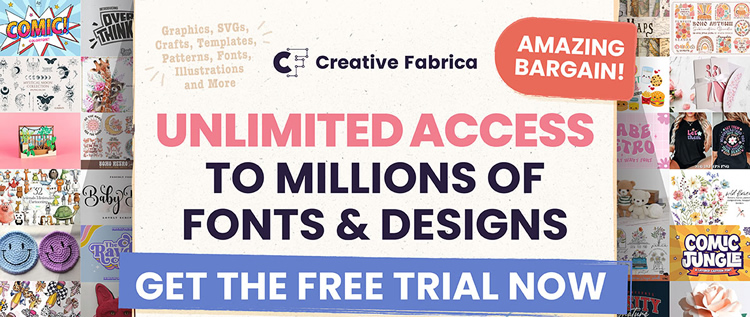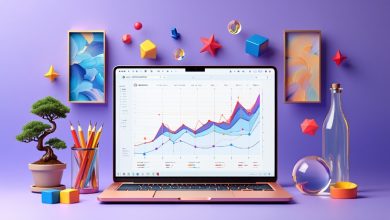How do I take good product photos with my phone?

Etsy Pedia: How Do I Take Good Product Photos With My Phone?
Table of Contents
- TL;DR: Your Phone is a Pro Studio in Your Pocket!
- Introduction: Ditch the Expensive Gear, Master Your Mobile
- The Foundation: Lighting is Everything
- Natural Light: Your Best Friend
- Artificial Light: When Nature Isn’t Cooperating
- Why This Matters: Impact on Customer Perception
- Key Takeaways: Mastering Your Light
- Setting the Scene: Backgrounds That Sell
- The Power of Simplicity
- Adding Context: Lifestyle Shots
- DIY Background Ideas
- Why This Matters: Visual Storytelling
- Key Takeaways: Background Brilliance
- Composition: Framing Your Product for Success
- The Rule of Thirds, Simplified
- Getting the Angles Right
- Showcasing Details: Close-Ups and Features
- Why This Matters: Guiding the Viewer’s Eye
- Key Takeaways: Strategic Shots
- Your Phone’s Camera Secrets: Unlocking Its Potential
- Focus and Exposure: The Basics
- Using Grid Lines and Other Aids
- Leveraging Your Phone’s Camera App Features
- Why This Matters: Maximizing In-Camera Tools
- Key Takeaways: Phone Photography Prowess
- Editing: The Polishing Touch
- Basic Adjustments: Brightness, Contrast, and Saturation
- Cropping and Straightening
- When to Use Apps vs. Desktop Software
- Why This Matters: Refining Your Visuals
- Key Takeaways: The Power of Post-Production
- Etsy’s Requirements: What You Need to Know
- Putting It All Together: A Step-by-Step Guide
- Prepare Your Product
- Find Your Light
- Set Up Your Background
- Frame Your Shot
- Capture Multiple Angles
- Edit Strategically
- Upload to Etsy
- Frequently Asked Questions
TL;DR: Your Phone is a Pro Studio in Your Pocket!
Forget bulky cameras and studio setups. If you’ve ever wondered, “How do I take good product photos with my phone?”, the answer is simpler than you think: strategic lighting, clean backgrounds, and a keen eye for composition are your secret weapons. We’ll reveal how to harness your smartphone’s capabilities to create stunning visuals that attract buyers, with hidden tips to elevate your listings beyond the competition. Ready to transform your Etsy shop? Discover how your phone can become your most powerful sales tool.
Introduction: Ditch the Expensive Gear, Master Your Mobile
You’ve poured your heart and soul into creating amazing products for your Etsy shop. You’ve written compelling descriptions, and you’re ready to launch your items into the world. But then comes the daunting task: photography. For many Etsy sellers, especially those just starting out, the idea of professional product photography can seem overwhelming and expensive. You might be thinking, “How do I take good product photos with my phone?” Well, good news! The device you carry in your pocket every day is more than capable of capturing stunning, sales-driving images.
This guide is designed to demystify product photography for Etsy sellers. We’ll walk you through practical, actionable steps to transform your smartphone into a powerful tool for showcasing your creations. You’ll learn to control light, choose effective backgrounds, master composition, and use your phone’s features like a pro. By the end of this article, you’ll have the confidence and the know-how to take product photos that stop browsers in their tracks and encourage them to click “Add to Cart.”
The Foundation: Lighting is Everything
Lighting is arguably the single most important element in product photography. It dictates how your product looks, its texture, its colors, and its overall appeal. Poor lighting can make even the most beautiful item look dull and uninviting. Conversely, great lighting can make your product pop, appear high-quality, and feel more desirable.
Natural Light: Your Best Friend
The best and most accessible light source is natural daylight. It’s soft, diffused, and incredibly flattering.
- Find a Window: Position your product near a window. Avoid direct sunlight, which can create harsh shadows and blown-out highlights. Overcast days are ideal, as the clouds act as a natural diffuser.
- Positioning is Key: Experiment with placing your product to the side of the window, not directly in front of it or directly facing it. This creates gentle shadows that give your product dimension.
- Time of Day: Mid-morning or late afternoon often provide the softest, most consistent light. Avoid harsh midday sun.
Artificial Light: When Nature Isn’t Cooperating
If natural light isn’t an option, you can still achieve excellent results with artificial lighting.
- Desk Lamps: Simple desk lamps with white bulbs can be surprisingly effective. Use two lamps positioned at a 45-degree angle to your product to create balanced lighting and minimize harsh shadows.
- Light Diffusers: If your artificial light is too harsh, you can diffuse it. Drape a thin white sheet or a piece of parchment paper over the lampshade to soften the light.
- Avoid Overhead Lighting: Ceiling lights often create unflattering shadows and can cast a yellow or blue tint.
Why This Matters: Impact on Customer Perception
The lighting in your photos directly influences how customers perceive the quality and value of your product. Bright, well-lit images suggest professionalism and attention to detail. Shadows and poor contrast can make a product look amateurish or even damaged. Customers are more likely to trust and purchase from listings that present products clearly and attractively.
Key Takeaways: Mastering Your Light
- Prioritize natural daylight whenever possible.
- Avoid direct sunlight; opt for diffused light.
- Use multiple soft light sources if working with artificial light.
- Balanced lighting is crucial for showcasing product details and form.
Setting the Scene: Backgrounds That Sell
Your background is the supporting actor in your product photo. It should enhance your product, not distract from it. A cluttered or mismatched background can confuse the viewer and detract from the main star: your item.
The Power of Simplicity
For most Etsy products, a clean, uncluttered background is king.
- Plain White or Light Gray: This is a classic for a reason. It makes your product stand out, appears professional, and allows the true colors of your item to shine. Use a large piece of white poster board, a plain wall, or even a white sheet.
- Neutral Tones: Muted grays, beiges, or very soft pastels can also work well, especially if they complement your brand aesthetic without competing with the product.
Adding Context: Lifestyle Shots
While simple backgrounds are excellent for showcasing the product itself, lifestyle shots help customers visualize themselves using or owning your item.
- In Use: Show your handmade pottery on a beautifully set table, your knitted scarf being worn, or your digital art displayed in a stylish frame.
- Contextual Setting: If you sell travel accessories, photograph them in a relevant travel setting (a suitcase, an airport lounge). For home decor, place it in a tastefully decorated room.
- Keep it Subtle: Ensure the background in lifestyle shots doesn’t overpower the product. It should add atmosphere, not become the main focus.
DIY Background Ideas
You don’t need a professional studio to create interesting backgrounds.
- Fabric Swatches: Different textures and colors of fabric can add visual interest.
- Wood or Marble Slabs: Small, inexpensive slabs from craft stores can lend a premium feel.
- Crinkled Paper: For a more rustic or artistic look, try crinkled kraft paper or colored art paper.
- Etsy Listing Mockup Templates: If you sell digital products like printables or templates, using Etsy shop templates can provide a professional and consistent look for showcasing mockups.
Why This Matters: Visual Storytelling
Your background is part of the story you tell about your product. A clean background emphasizes the product’s craftsmanship and details. A lifestyle background helps customers imagine the product in their own lives, fostering an emotional connection and increasing desire.
Key Takeaways: Background Brilliance
- Simple, neutral backgrounds are generally best for product clarity.
- Lifestyle shots help customers connect with your product.
- DIY options can be budget-friendly and creative.
- The background should always support, not overshadow, your product.
Composition: Framing Your Product for Success
Composition is about how you arrange the elements within your photograph. Good composition guides the viewer’s eye, creates a visually appealing image, and highlights the most important features of your product.
The Rule of Thirds, Simplified
Imagine dividing your image into nine equal parts with two horizontal and two vertical lines. The “rule of thirds” suggests placing your subject along these lines or at their intersections.
- Placement: Instead of centering your product perfectly, try placing it slightly off-center. This creates a more dynamic and visually engaging image.
- Focus Point: Use these points of intersection as a guide for where to place the most important part of your product.
Getting the Angles Right
Show your product from multiple angles to give buyers a complete understanding.
- Front View: The standard, direct shot.
- Side Views: Essential for understanding depth and form.
- Top-Down (Flat Lay): Great for showcasing multiple items, patterns, or how a product lays flat.
- Three-Quarter View: Often the most pleasing and three-dimensional angle.
Showcasing Details: Close-Ups and Features
Don’t be afraid to zoom in! High-quality close-up shots are crucial for highlighting:
- Texture: The weave of fabric, the grain of wood, the smoothness of ceramic.
- Craftsmanship: Intricate details, stitching, hand-painted elements.
- Materials: The quality of your components.
- Unique Features: Special clasps, ergonomic designs, innovative functions.
Why This Matters: Guiding the Viewer’s Eye
Effective composition ensures that the viewer sees what you want them to see. It makes your photos easy to digest and helps them quickly understand the product’s benefits and aesthetic. Well-composed photos feel intentional and professional, building trust.
Key Takeaways: Strategic Shots
- Use the rule of thirds for more engaging compositions.
- Capture your product from various angles.
- Utilize close-ups to highlight key details and craftsmanship.
- A clear visual hierarchy guides the viewer to what’s important.
Your Phone’s Camera Secrets: Unlocking Its Potential
Modern smartphone cameras are incredibly powerful. With a few tips, you can harness their full potential for stunning product shots.
Focus and Exposure: The Basics
Getting your product in sharp focus and correctly exposed is non-negotiable.
- Tap to Focus: On your phone’s camera app, tap on your product on the screen. This tells the camera where to focus.
- Adjust Exposure (Brightness): After tapping to focus, you’ll often see a sun icon or a slider. Slide this up or down to adjust the brightness of the image. Aim for a well-lit image without blown-out highlights or deep, dark shadows.
Using Grid Lines and Other Aids
Most smartphone camera apps offer helpful tools.
- Grid Lines: Turn on grid lines (usually found in camera settings). These can help you implement the rule of thirds and ensure your product is straight.
- Level Indicator: Some phones have a built-in level to ensure your shots are perfectly horizontal or vertical.
Leveraging Your Phone’s Camera App Features
Explore your phone’s native camera app before downloading others.
- Portrait Mode: Can be useful for blurring the background in lifestyle shots, but be careful as it can sometimes create odd cut-offs on products.
- HDR (High Dynamic Range): This can help capture detail in both very bright and very dark areas of a scene, useful for high-contrast situations. Use it judiciously, as it can sometimes make photos look unnatural.
- Zoom (Optical vs. Digital): Use optical zoom if your phone has it, as it preserves image quality. Digital zoom crops the image, reducing quality. It’s usually better to get closer to your product than to use digital zoom.
Pro Tip: For truly professional-looking photos, consider using a dedicated photography app that offers more manual controls. However, for most Etsy sellers, mastering the native camera app is more than enough to get started. If you’re struggling with the technical aspects of photography and want to streamline your process, our Canva Crash Course for Etsy Sellers can help you create stunning visuals and graphics with ease.
Why This Matters: Maximizing In-Camera Tools
Your phone’s camera has built-in features designed to help you take better photos. Understanding and using these tools allows you to capture higher-quality images directly from your device, reducing the need for extensive editing later.
Key Takeaways: Phone Photography Prowess
- Always tap to focus and adjust exposure for clarity.
- Utilize grid lines to improve composition and alignment.
- Understand your phone’s specific camera features and how to use them effectively.
- Prioritize optical zoom over digital zoom.
Editing: The Polishing Touch
Once you’ve captured your photos, a little editing can go a long way. This is where you refine your images, enhance their appeal, and ensure consistency across your listings.
Basic Adjustments: Brightness, Contrast, and Saturation
These are the most fundamental editing tools.
- Brightness: Fine-tune the overall lightness or darkness of the image.
- Contrast: Adjust the difference between light and dark areas. More contrast can make an image “pop,” but too much can lose detail.
- Saturation: Control the intensity of colors. Slightly boosting saturation can make colors look more vibrant, but overdoing it can make them look artificial. Aim for true-to-life colors.
Cropping and Straightening
These simple edits can dramatically improve a photo’s professionalism.
- Cropping: Remove distracting elements from the edges of your photo, or adjust the aspect ratio to fit Etsy’s display requirements.
- Straightening: Ensure horizons are level and vertical lines are straight, especially for products like artwork or architectural items.
When to Use Apps vs. Desktop Software
There are numerous editing options available:
- Mobile Apps: Apps like Snapseed (free), Adobe Lightroom Mobile (freemium), or VSCO offer powerful editing tools directly on your phone. They are excellent for quick edits on the go.
- Desktop Software: For more in-depth editing, software like Adobe Photoshop, Lightroom Classic, or even free options like GIMP offer greater control.
- Etsy Listing Mockup Templates: For digital products, our Etsy listing mockup templates can provide a professional presentation without extensive photo editing.
Soft CTA: If you find yourself spending too much time on editing and want to create visually stunning mockups for digital products quickly, explore our collection of Etsy shop templates. They are designed to showcase your digital items professionally and attractively.
Why This Matters: Refining Your Visuals
Editing is the final step that elevates a good photo to a great one. It ensures your product is presented in the best possible light, accurately reflecting its quality and appeal. Consistent editing across all your listings creates a cohesive and professional shop brand.
Key Takeaways: The Power of Post-Production
- Master basic adjustments like brightness, contrast, and saturation.
- Crop and straighten photos for a polished look.
- Choose an editing tool that fits your workflow and skill level.
- Strive for accurate color representation and a clean aesthetic.
Etsy’s Requirements: What You Need to Know
Etsy has specific guidelines for product photos to ensure a good shopping experience. Understanding these will help your listings perform better.
- Minimum of One Photo: You must have at least one photo per listing.
- Maximum of Ten Photos: Use this space wisely! Showcase your product from all important angles.
- High Resolution: Photos should be clear and in focus. Etsy recommends images at least 2000 pixels on the shortest side.
- Image Ratio: While not strictly enforced for all images, Etsy often displays square or horizontal images in search results. Consider this when composing your main photo.
- No Watermarks (On Primary Image): While you can add watermarks to secondary images, Etsy discourages them on the primary photo as they can obscure the product.
- Show the Product Clearly: Avoid text overlays or promotional graphics on your main image, as these can be flagged.
For more detailed information, always refer to Etsy’s official Seller Handbook on Photography.
Putting It All Together: A Step-by-Step Guide
Here’s a practical workflow to create fantastic product photos with your phone:
1. Prepare Your Product
- Clean it thoroughly. Remove dust, fingerprints, or any smudges.
- Ensure all components are properly assembled or positioned.
- If it’s fabric, iron or steam out wrinkles.
2. Find Your Light
- Locate a window with soft, diffused natural light.
- Alternatively, set up two soft artificial lights at a 45-degree angle to your product.
3. Set Up Your Background
- Use a plain white or neutral-colored background. A poster board, a smooth wall, or a fabric backdrop works well.
- Ensure the background is large enough to encompass your product and any props.
4. Frame Your Shot
- Place your product on the background.
- Open your phone’s camera app and turn on grid lines.
- Position yourself and your phone to compose the shot, using the rule of thirds if applicable.
- Tap your product on the screen to focus and adjust exposure.
5. Capture Multiple Angles
- Take shots from the front, sides, top, and any other angle that best showcases your product.
- Don’t forget close-up shots of important details.
- Consider a lifestyle shot if it adds value.
6. Edit Strategically
- Use your preferred mobile editing app or desktop software.
- Make basic adjustments to brightness, contrast, and saturation.
- Crop and straighten as needed.
- Ensure colors are true to life.
7. Upload to Etsy
- Select your best photos, starting with the one that most clearly represents your product.
- Utilize all 10 photo slots to provide a comprehensive view.
- Consider adding a short video if appropriate for your product.
Struggling to find the right keywords to get your amazing photos seen? Our Premium SEO Guide is packed with strategies to help buyers discover your products.
Frequently Asked Questions
How can I make my product photos look professional without a fancy camera?
Professional-looking photos rely more on technique than expensive equipment. Mastering natural lighting, using clean backgrounds, composing your shots carefully, and applying simple editing techniques with your smartphone are key.
What’s the best way to photograph shiny or reflective products?
For shiny items, diffuse your light as much as possible to avoid harsh reflections. Position your lights so they bounce off the product rather than shine directly onto it. Consider using a light tent or a piece of white fabric draped around the product to soften reflections.
Should I use a tripod with my phone?
A tripod is highly recommended for stability, especially in low light or when taking multiple shots from the exact same angle. It helps prevent blurry photos and ensures consistency. Small, affordable phone tripods are widely available.
How many photos should I use on my Etsy listing?
Etsy allows up to 10 photos. It’s best to use as many as you can to showcase your product thoroughly. Include multiple angles, close-ups of details, and a lifestyle shot if relevant.
Can I edit my product photos on my phone?
Absolutely! There are many powerful and user-friendly photo editing apps available for both iOS and Android that allow you to adjust brightness, contrast, color, crop, and straighten your images directly on your phone.
Conclusion
Taking good product photos with your phone is not only possible but achievable for every Etsy seller. By focusing on good lighting, thoughtful backgrounds, intentional composition, and utilizing your phone’s capabilities, you can create visuals that capture attention and drive sales. Remember, your photos are your customers’ first impression, so invest the time to make them count.
Ready to take your Etsy shop to the next level? While great photos are crucial, effective marketing is what brings buyers to your listings. Explore our Etsy Guides & Courses to unlock more strategies for success, or consider our Etsy Store Audit Service for personalized feedback to boost your sales.
What are your biggest challenges when it comes to product photography? Share your thoughts and questions in the comments below!




